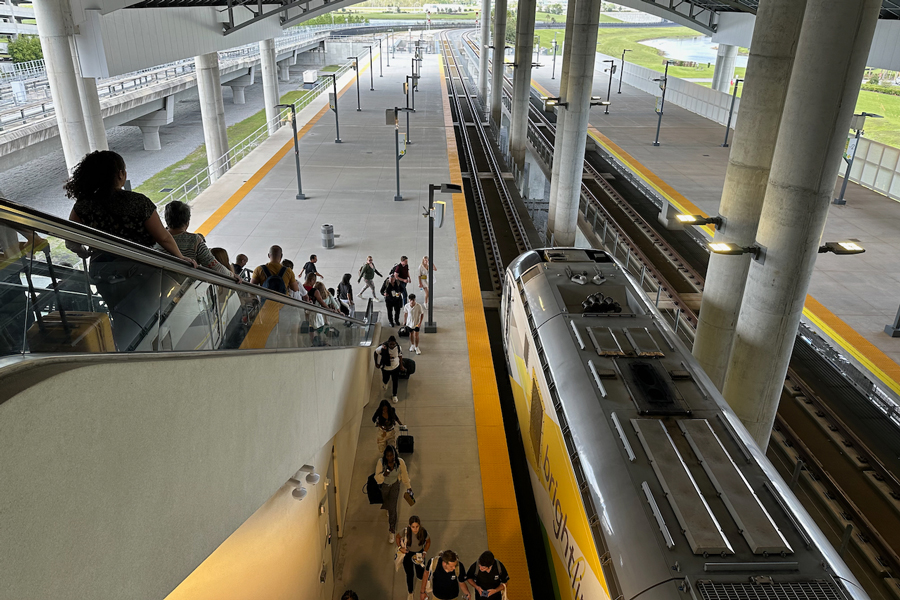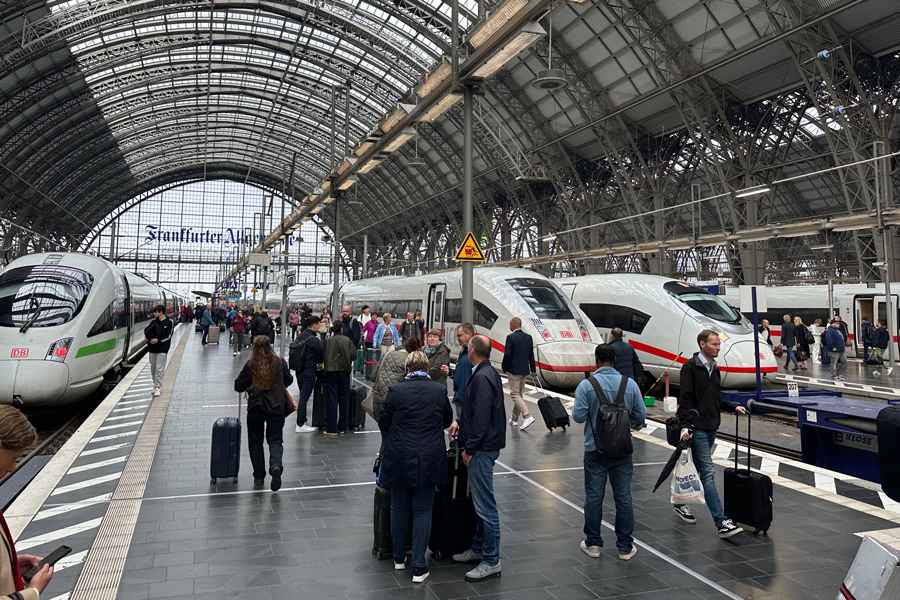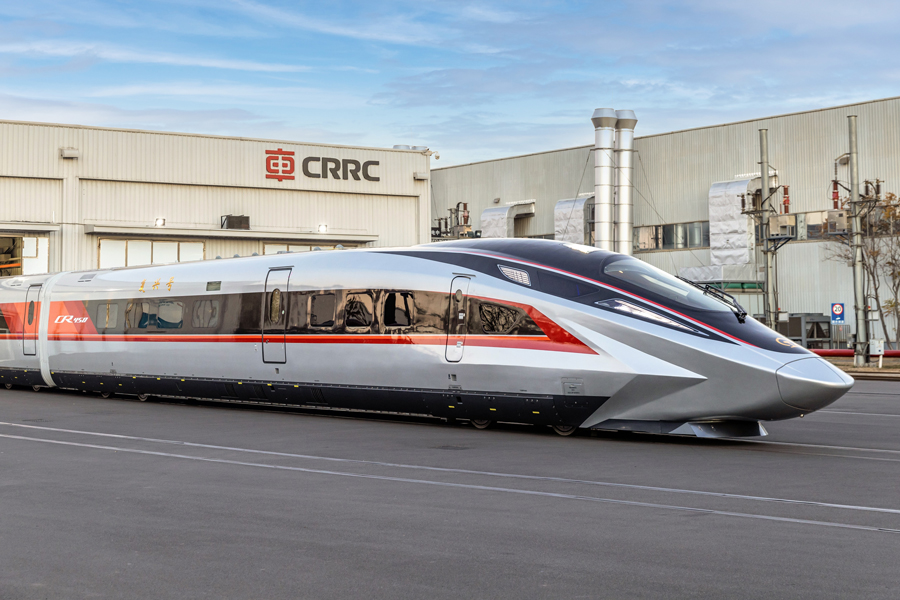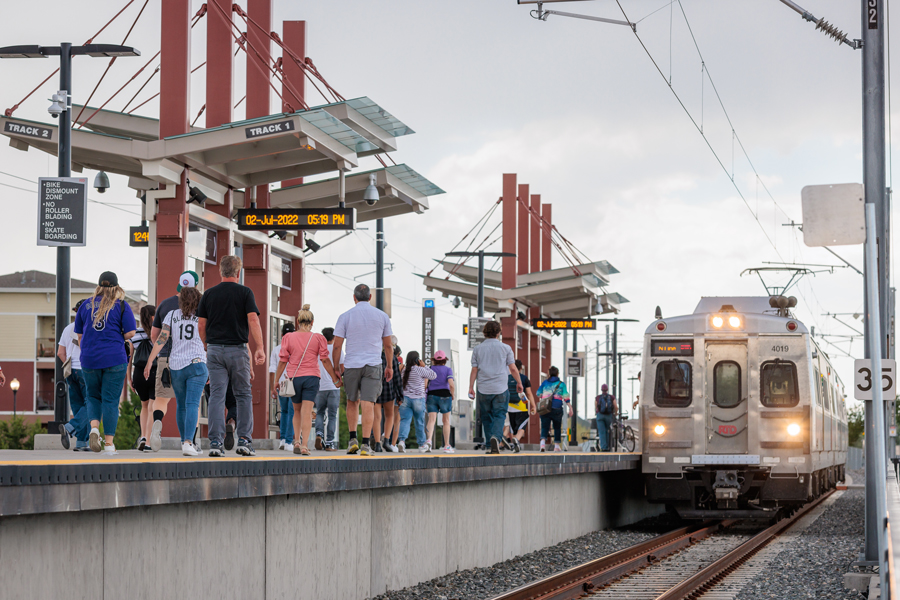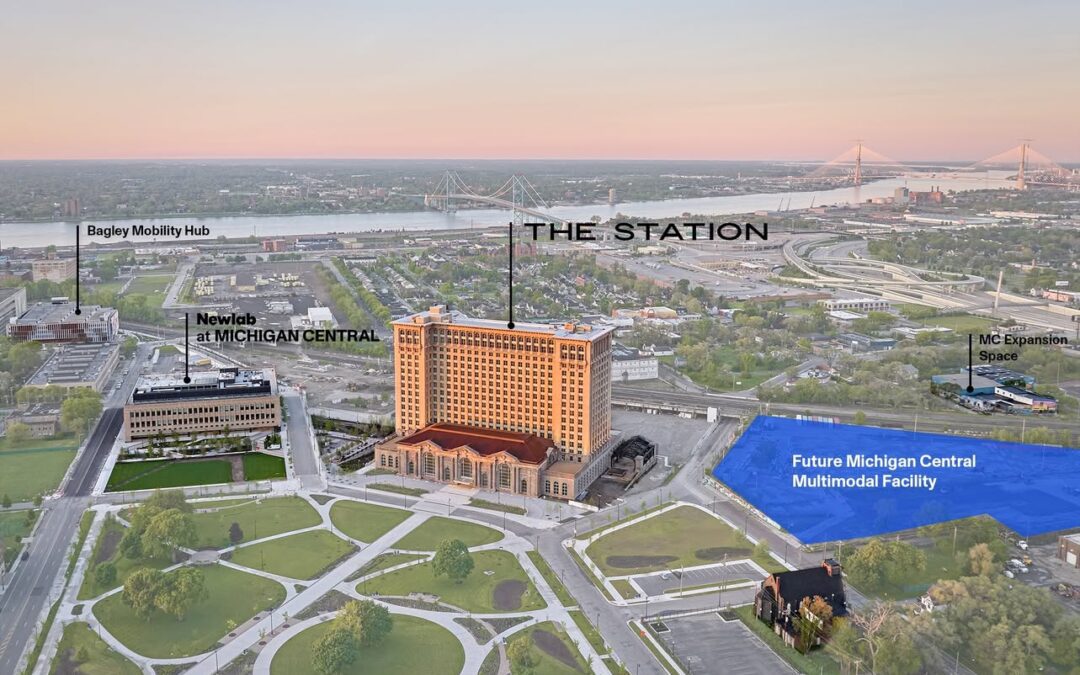At least one-third of Americans do not have access to a car that they could take on a road trip, according to a new study by the Natural Resources Defense Council – and as we’ll discuss, the percentage is probably greater than that. Yet for decades, civil engineers...
Hourly service and 600-seat trains
Every hour, on the hour – that’s the way the Pennsylvania Railroad and its successors operated their “Clocker” trains between Philadelphia and New York City for 90 years. It was a successful business because passengers could depend on the hourly frequency.
Here now comes Brightline, the private-sector operator of trains between Miami and West Palm Beach, since 2018, and between Miami and Orlando since 2023. The Brightline schedule shows 18 daily round trips between Miami and West Palm Beach, with 10 of those runs going to and from Orlando. This is getting close to hourly service.
Get Involved
Tell Congress: It’s time to reconnect the country with high-speed and regional rail!
Demand has been such that trains have been sold out. The company will be adding coaches as they are delivered in the next several months – expanding from four-car trains to 10-car, 600-seat trains – re-arranging the schedule to run more trains when demand is greatest, and instituting a peak/off-peak fare structure, meant to incentivize passengers with flexibility and price sensitivity to ride the less-in-demand trains.
Brightline covers the 235 miles between Miami and Orlando in 3½ hours, which is roughly how long it takes to drive. Top speed is 125 mph; average speed is 67 mph.
The speed is good, but what really generates passenger demand is frequency and reliability. We have always believed that hourly service induces the demand that makes investment in passenger rail worthwhile. Brightline is proving it.
Meanwhile, states that support Amtrak corridor services dither. Borealis service – one round trip per day between Chicago and St. Paul, Minnesota, took nine years of official planning, preceded by a decade of advocacy, before going into operation in 2024. It averages 55 mph. It is exceeding its modest ridership goals.
Six weeks ago, Mardi Gras service, between Mobile, Alabama and New Orleans, began rolling with two round trips per day, averaging a ponderous 39 mph. Lobbying for this service began in 2010.
In fairness, the Atlantic Coast of South Florida is a terrific market for passenger rail, with significant population throughout, traffic congestion making driving unattractive if there’s a good alternative, and the potential for developing real estate around the stations – which is something every city with a train station should be encouraging.
But the key is Brightline, not knowing exactly how the market would respond to something new, went in with hourly service from the start. It turns out demand for passenger trains either existed, or was induced by the level of service. Potential passengers do not have to schedule their trips around the train. The train is there for them when they need it, just like the Clockers at Penn Station in the 20th Century.
There are many corridors that should have hourly service, at minimum, and we urge the respective states not to think small. Don’t take forever, find a way to overcome hurdles, and get the trains rolling:
- Virginia, between Washington, D.C. and Richmond
- Pennsylvania, between Philadelphia and Pittsburgh
- New York, between New York City and Buffalo
- Michigan, between Pontiac and Chicago
- Ohio, between Cleveland and Detroit
- Washington, between Portland, Oregon and Seattle
- Wisconsin, between Madison and Chicago
Some of these can be done via Amtrak, others by private companies, and others by commuter rail authorities, which may exist or would have to be created.
The keys to success with passenger rail are an average speed of at least 65 mph over the entire route, reliability, and at least 10 trains a day.
Hourly frequency = ridership.
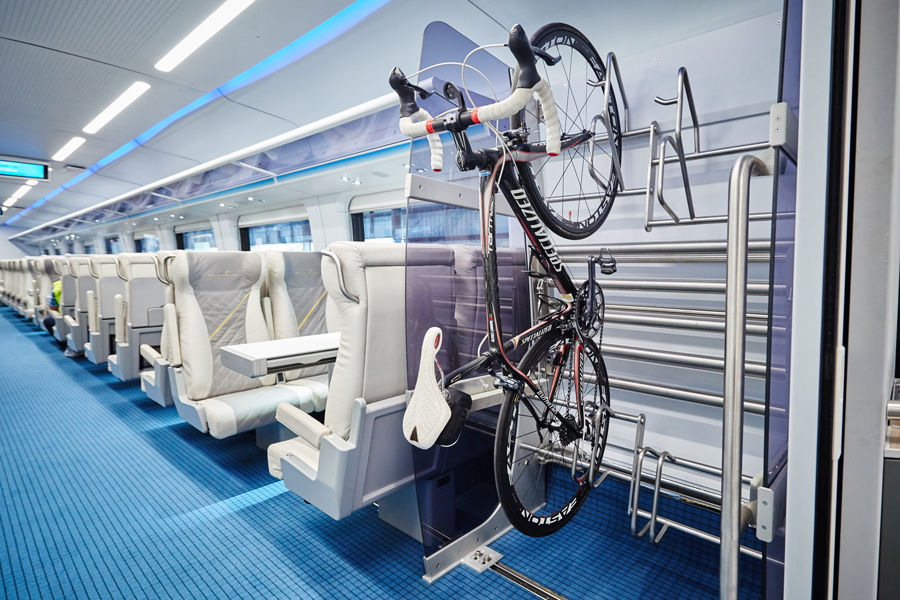
Bright interiors, bike racks, and other amenities make Brightline trains a great way to travel.
The Latest from HSRA
Our Latest Blog Posts
Check out the latest news, updates, and high speed rail insights from our blog!
